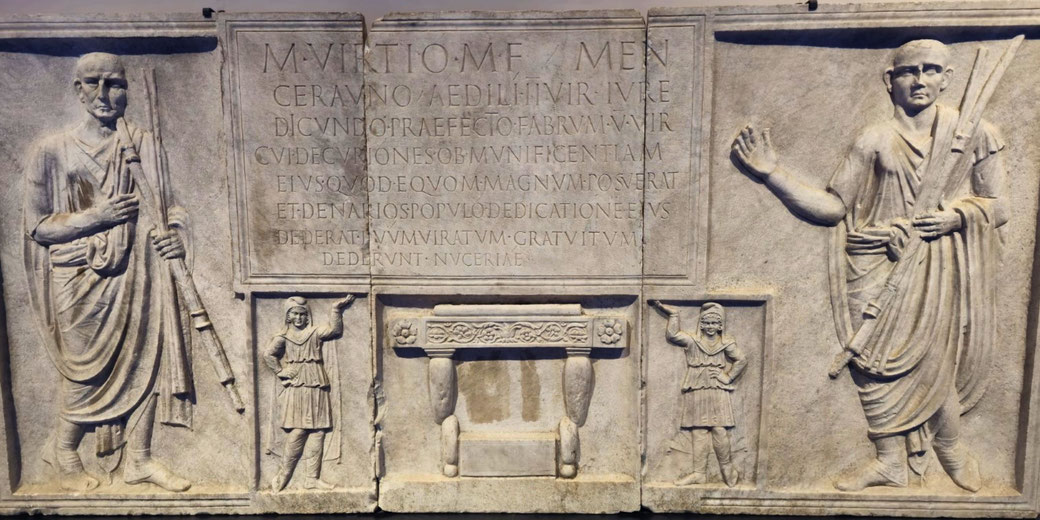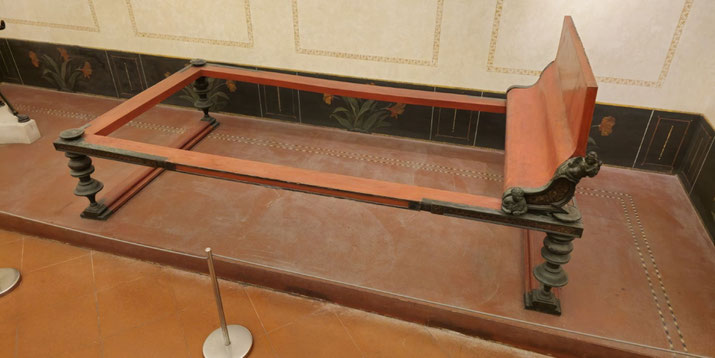Creepy Roman burial customs

The ancient Romans were known for their sophisticated culture, advanced architecture, and military prowess. However, their burial customs were not always as elegant and dignified as their other traditions.
In fact, some of their practices were considered downright creepy.
The dead on display
The practice of "lying in state" was a common custom in ancient Rome, particularly for famous people.
It involved the public display of the deceased's body for several days before the funeral.
The purpose of this practice was to allow friends and family members to pay their final respects to the deceased and to offer their condolences to the family.
During the period of lying in state, the deceased's body would be placed on a bed or couch in their home or a public space, such as a temple or forum.
The body was often dressed in the deceased's best clothes and adorned with flowers, wreaths, and other ornaments.

Visitors would come to pay their respects during a designated period of time, which was often announced publicly.
The family members of the deceased would greet the visitors and offer them food and drink as a sign of hospitality.
The visitors would then approach the body and offer their condolences, sometimes by touching or kissing the deceased's hand.
The period of lying in state varied depending on the status and position of the deceased.
For example, a prominent politician or military leader might lie in state for several days or even weeks, to allow for dignitaries and officials from other cities to pay their respects.
However, an ordinary citizen might only be on display for a few hours.
Time for a walk
After the period of lying in state was over, the funeral procession would begin. It would start at the place where the body was displayed and proceed through the streets of Rome towards the burial site, which was usually located outside the city walls.
The body was carried on a litter or placed in a funerary carriage. Behind this walked the family members of the deceased.
The family members would be dressed in dark colored clothing, particularly black.
A particular kind of toga, called the toga pulla was worn for high status funerals.
Often, women would refrain from wearing jewellery and men would not cut their hair or beards, as a sign of grief.
They also would carry candles or lamps as they walked. They were often accompanied by close friends and associates of the deceased.
The procession also often had musicians and professional mourners known as praeficae, who would sing funeral dirges and lamentations.
Cremation or burial?
Initially, in the early days of the Roman Republic, cremation was the most common funerary practice.
The body was typically cremated on a funeral pyre, and the ashes were then collected and placed in a funerary urn.
However, during the late Republic and early Empire, particularly in the 2nd and 3rd centuries AD, burial became more common among the Roman elite.
This was likely due to the influence of Greek and Egyptian culture, where burial was the preferred method of disposal of the deceased.
Burial in this period was typically done in a tomb, which was often located in a necropolis or a designated burial ground.
Family tombs were particularly common in ancient Rome, and were often designed to be grand and impressive.
They would contain the remains of multiple family members, often over several generations.
Some family tombs were decorated with intricate mosaics, frescoes, and sculptures, and were designed to be visited and admired by visitors.

For Roman families or individuals who struggled to cover the cost of burials and funerals, they could join a collegia funeratica, or 'funeral clubs'.
These were associations that provided members with a proper funeral and burial in order to ensure that they were honored after death.
Necropolises: cities of the dead
Necropolises were common in ancient Rome. They were large, sprawling areas that were dedicated to the burial of the dead.
The necropolis often contained a variety of different tombs, including family tombs, mausoleums, and columbaria.
Mausoleums were popular in ancient Rome, particularly among the wealthy and powerful.
These were large, elaborate structures that often contained multiple burial chambers and were designed to be impressive and ornate.
One of the most famous mausoleums in ancient Rome is the Mausoleum of Augustus, which was built by the first Roman emperor.
Another is the Mausoleum of Hadrian, now known as Castel Sant'Angelo. It was constructed in Rome in AD 139 for the Emperor Hadrian and his successors.
Columbaria were a type of tomb that contained niches for urns, and were particularly popular in the later period of ancient Rome.
They were typically used for the burial of lower-class citizens or for those who could not afford a larger tomb.
In fact, the Appian Way, one of Rome's most famous roads, was lined with tombs and mausoleums.
It was an important burial ground for the Roman elite to celebrate the power and achievements of past members of their families.
For the very wealthy who chose to be buried, they could pay for an elaborate sarcophagus for their body.
Roman sarcophagi were often elaborately decorated with scenes from mythology, the deceased's life, or symbolic motifs.
It was a way to demonstrate the deceased's wealth and the artistic skill of the stonemason.

Wax masks: preserving the faces of the deceased
In ancient Rome, wax masks (called imagines) were sometimes used in funerary rituals as a way to preserve the likeness of the deceased.
These masks were often placed over the face of the deceased during the period of lying in state, and sometimes were also used in the funeral procession.
Wax masks were created using a mold that was made from the face of the deceased.
The mold was typically made out of plaster or clay, and the wax was poured into the mold to create a replica of the face.
The mask was then painted to resemble the deceased, including hair, skin tone, and facial features.
Wax masks were primarily used for individuals who were of high status or importance, such as emperors, members of the aristocracy, or military leaders.
These individuals were often commemorated with a wax effigy, which was a full-scale statue made out of wax that was displayed at the funeral.
Some wealthy Roman families put the wax masks of their deceased ancestors in the atriums of their homes as a way for the family to honor and remember their ancestors.
These masks were often displayed alongside busts or statues of other family members, and served as a way to maintain a connection with the family's past and lineage.
What do you need help with?
Download ready-to-use digital learning resources
Copyright © History Skills 2014-2025.
Contact via email
With the exception of links to external sites, some historical sources and extracts from specific publications, all content on this website is copyrighted by History Skills. This content may not be copied, republished or redistributed without written permission from the website creator. Please use the Contact page to obtain relevant permission.





